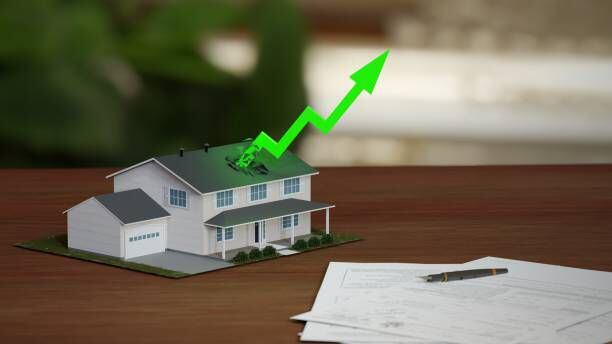
Fourteen years after the violent bursting of the real estate bubble, the Spanish construction market is experiencing a new period of euphoria, with skyrocketing sales and rising prices that are beginning to remind us of other times, although experts have not sounded the alarm yet .
It seems that, now, the long convalescence after the 2008 crisis is behind us: “The residential market has been going through an exceptional moment for a year,” says Sandra Daza, general director of the real estate consultancy Gesvalt.
Last year, 565,523 homes were sold in Spain, according to data published by the National Institute of Statistics (INE). The figure, which represents an increase of 34.6% compared to 2020, is the highest since 2007, the year that preceded the crisis.
And this renewed appetite affects prices: according to the General Council of Notaries, the cost per square meter increased by an average of 5.3% in 2021, driven above all by increases in the Balearic Islands (14.2%), Andalusia (8.1%), Canarias (7.9%) and Madrid (7.1%), which were the regions with the highest increases.
The year 2021 “has exceeded the good expectations with which it began”, confirms Francisco Iñareta, from the Idealista real estate portal, who insists on “the strength of the demand”.
“Statistics show that the pandemic accelerated the appetite of Spaniards for home ownership,” he adds.
The brick market had already started to recover at the end of the last decade, encouraged by economic growth. But the health crisis, which forced the suspension of sales and works, cut the dynamics in 2020.
After that unexpected break, “the resumption of activity was foreseeable”, judges Pablo Kindelán, associate director of Rubica Real Estate. But the rebound in 2021 “goes beyond recovery”, adds this expert, who describes a “structural phenomenon”.
An opinion shared by Daza, for whom the market has definitely overcome the worst years of the previous decade. “Housing has become a refuge asset,” explains the analyst, who attributes this improvement both to “very low interest rates” and “the high savings rate” of households.
Without overheating’
A torrent of bankrupt companies, collapsing prices, abandoned works… The bursting of the real estate bubble in 2008, after years with prices disconnected from market value, knocked down the Spanish economy, heavily dependent on the construction sector.
Could the same scheme be reproduced now? In recent days, various economic actors have called for “vigilance”, such as the Bank of Spain, for which the prices of real estate assets are currently “slightly above” their equilibrium level.
But for specialists in the sector, the risk that it will lose control again is limited for now.
“We must always be vigilant, but we are still far from overheating,” says Daza. “The situation is very different from that of 2008”, adds Kindelán.
Although important, the price increases are concentrated in some goods, especially in second homes, and still cannot be compared with those of the 2000s. “At that time, the increases were 10% to 12% year-on-year”, double of the current rhythm, recalls Sandra Daza.
In addition, the rise in demand has not been accompanied in recent months by an escalation in construction. According to the government, in 2021 there were 105,000 home construction starts, a figure far removed from the pre-crisis records (nearly 700,000 in 2002).
According to industry specialists, the main difference with the 2000s concerns, however, bank loans. “Back then, banks financed anything. But it is no longer the case. They have learned the lesson of the crisis”, highlights Pablo Kindelán.
This change in position is also a consequence of a reinforcement of the “prudential” rules imposed by the European Central Bank (ECB). The credits are high, but “the conditions are stricter”, insists this expert, who does not detect “symptoms of a real estate bubble”.
An opinion also shared by Pedro Álvarez, an analyst at Caixabank, who believes that the market will calm down in 2022. “The intense rate of growth in 2021 does not seem sustainable” in the long term, explains this economist, who rules out the risk of “a worrying upward spiral.
Source: Gestion
Ricardo is a renowned author and journalist, known for his exceptional writing on top-news stories. He currently works as a writer at the 247 News Agency, where he is known for his ability to deliver breaking news and insightful analysis on the most pressing issues of the day.












